第120章 CENTRAL CHILE:--STRUCTURE OF THE CORDILLERA(15)
This great uniclinal line is intersected, near the Puente del Inca, by the valley along which the road runs, and the strata composing it will be immediately described.On the south side of the road, in the space corresponding with the mountains [E, F, and G], the strata everywhere dip westward generally at an angle of 30 degrees, occasionally mounting up to 45 degrees, but not in an unbroken line, for there are several vertical faults, forming separate uniclinal masses, all dipping in the same direction,--a form of elevation common in the Cordillera.We thus see that within a narrow space, the gypseous strata have been upheaved and crushed together by a great uniclinal, anticlinal, and one lesser uniclinal line [E] of elevation; and that between these three lines and the Cumbre, in the sandstones, conglomerates and porphyritic formation, there have been at least two or three other great elevatory axes.
The uniclinal axis [I] intersected near the Puente del Inca (of which the strata at [H] form a part) ranges N.by W.and S.by E., forming a chain of mountains, apparently little inferior in height to the Cumbre: the strata, as we have seen, dip at an average angle of 30 degrees to the west.(At this place, there are some hot and cold springs, the warmest having a temperature, according to Lieutenant Brand "Travels," page 240, of 91degrees; they emit much gas.According to Mr.Brande, of the Royal Institution, ten cubical inches contain forty-five grains of solid matter, consisting chiefly of salt, gypsum, carbonate of lime, and oxide of iron.
The water is charged with carbonic acid and sulphuretted hydrogen.These springs deposit much tufa in the form of spherical balls.They burst forth, as do those of Cauquenes, and probably those of Villa Vicencio, on a line of elevation.) The flanks of the mountains are here quite bare and steep, affording an excellent section; so that I was able to inspect the strata to a thickness of about 4,000 feet, and could clearly distinguish their general nature for 1,000 feet higher, making a total thickness of 5,000feet, to which must be added about 1,000 feet of the inferior strata seen a little lower down the valley, I will describe this one section in detail, beginning at the bottom.
1st.The lowest mass is the altered clay-slate described in the preliminary discussion, and which in this line of section was here first met with.
Lower down the valley, at the R.de las Vacas, I had a better opportunity of examining it; it is there in some parts well characterised, having a distinct, nearly vertical, tortuous cleavage, ranging N.W.and S.E., and intersected by quartz veins: in most parts, however, it is crystalline and feldspathic, and passes into a true greenstone often including grains of quartz.The clay-slate, in its upper half, is frequently brecciated, the embedded angular fragments being of nearly the same nature with the paste.
2nd.Several strata of purplish porphyritic conglomerate, of no very great thickness, rest conformably upon the feldspathic slate.A thick bed of fine, purple, claystone porphyry, obscurely brecciated (but not of metamorphosed sedimentary origin), and capped by porphyritic conglomerate, was the lowest bed actually examined in this section at the Puente del Inca.
3rd.A stratum, eighty feet thick, of hard and very compact impure whitish limestone, weathering bright red, with included layers brecciated and re-cemented.Obscure marks of shell are distinguishable in it.
4th.A red, quartzose, fine-grained conglomerate, with grains of quartz, and with patches of white earthy feldspar, apparently due to some process of concretionary crystalline action; this bed is more compact and metamorphosed than any of the overlying conglomerates.
5th.A whitish cherty limestone, with nodules of bluish argillaceous limestone.
6th.A white conglomerate, with many particles of quartz, almost blending into the paste.
7th.Highly siliceous, fine-grained white sandstone.
8th and 9th.Red and white beds not examined.
10th.Yellow, fine-grained, thinly stratified, magnesian (judging from its slow dissolution in acids) limestone: it includes some white quartz pebbles, and little cavities, lined with calcareous spar, some retaining the form of shells.
11th.A bed between twenty and thirty feet thick, quite conformable with the underlying ones, composed of a hard basis, tinged lilac-grey porphyritic with NUMEROUS crystals of whitish feldspar, with black mica and little spots of soft ferruginous matter: evidently a submarine lava.
12th.Yellow magnesian limestone, as before, part-stained purple.
13th.A most singular rock; basis purplish grey, obscurely crystalline, easily fusible into a dark green glass, not hard, thickly speckled with crystals more or less perfect of white carbonate of lime, of red hydrous oxide of iron, of a white and transparent mineral like analcime, and of a green opaque mineral like soap-stone; the basis is moreover amygdaloidal with many spherical balls of white crystallised carbonate of lime, of which some are coated with the red oxide of iron.I have no doubt, from the examination of a superincumbent stratum (19), that this is a submarine lava; though in Northern Chile, some of the metamorphosed sedimentary beds are almost as crystalline, and of as varied composition.
14th.Red sandstone, passing in the upper part into a coarse, hard, red conglomerate, 300 feet thick, having a calcareous cement, and including grains of quartz and broken crystals of feldspar; basis infusible; the pebbles consist of dull purplish porphyries, with some of quartz, from the size of a nut to a man's head.This is the coarsest conglomerate in this part of the Cordillera: in the middle there was a white layer not examined.